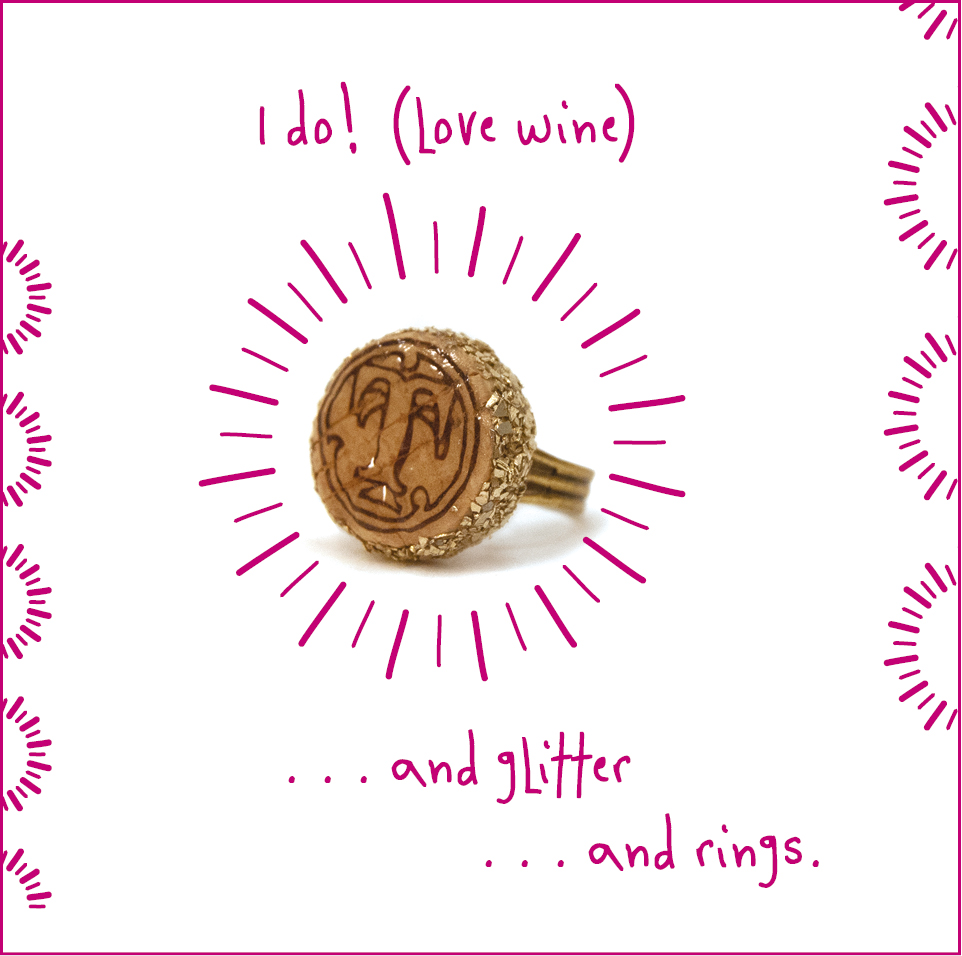

Ahh, glitter and wine, two of a girl’s best friends and the basis of this statement ring. This is the perfect project to show off that cool printing you sometimes see on the top of wine corks. Make a bunch at once for your Girls’ Night Out cohorts!
* 1 wine cork with interesting printing on the top
* Coping saw
* Sandpaper
* Mod Podge Dimensional Magic Glue or Judikins Diamond Glaze
* Gold glitter
* E6000 glue
* 1 blank brass or gold-tone ring

Wine Profile: Zinfandel
The reputation of the U.S. wine industry is based largely on the ability of European grape varieties to grow well here. Zinfandel became a particular source of pride in the nineteenth and twentieth centuries because it was considered the only indigenous American grape variety to produce wines that Europeans could respect. However, thanks to genetic testing courtesy of the University of California at Davis, Zinfandel was determined to be identical to the Croatian grape Crljenak Kastelanski. No one truly knows how the grape arrived in America, but the reputation of American Zinfandel wines is secure.
Zinfandel would probably not occupy as much California vineyard land as it does today were it not for the success of White Zinfandel in the 1980s. Zinfandel is a red grape, but when it is crushed and the skins are left to soak in its juice for a few hours, the juice turns pink. Quick removal and partial fermentation results in a sweet, pink, fruity wine that has captivated wine drinkers in the United States.
Red Zinfandel is a completely different story. Zinfandel can ripen to high sugar levels, creating high-alcohol wines with a pronounced viscosity and raspberry, peppery aromas and flavors. Growing Zinfandel requires skill as its large grape bunches often do not ripen evenly.